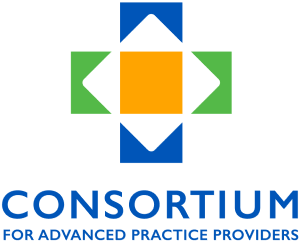My original opening for this blog was: The first snows have blanketed ski slopes. On the shoulders of the Rockies, the aspens are a bright yellow. In the folds of the Appalachians the fall mists welcome the morning. ‘Leaf peepers’ in the North East make seasonal treks to see shades of scarlet, orange, and russet cascading down the mountain sides. Cooling breezes off the Gulf of Mexico refresh the coast. This time of year, is yet another transition – keeping to the theme of recent blogs. Fall and transitions always reminds me of Robert Frost’s poem, The Road Not Taken, which opens with:
“Two roads diverged in a yellow wood,
And sorry I could not travel both
And be one traveler, long I stood
And looked down one as far as I could
To where it bent in the undergrowth;
Then took the other, as just as fair,
And having perhaps the better claim,
Because it was grassy and wanted wear;
Though as for that the passing there
Had worn them really about the same…”
Then, a wonderful synchronicity occurred when I attended the APGAP (Association of Postgraduate APRN Programs) workshop in Phoenix. I’d written this post the evening before the conference. The next morning, we were greeted by the conference’s opening with exactly this picture and Robert Frost’s poem. The idea of making choices and the impact of those choices regarding training program design, delivery, and accreditation on outcomes resonated deeply. It was especially apt since I’d also been inspired by Robert Frost and had just finished writing this blog, focusing on choices, transitions, and creating the future.
Making choices necessitates a transition. Staying on the same path is choosing to make a commitment to pursue familiarity and continuity; the likelihood of predictable change that occurs with a known situation – and perhaps a transition to stability. Electing a different path is choosing a transition to new opportunities and the possibly disruptive innovation that generates new knowledge, new practice, new policies. Newly graduated NPs choose a year of intensive postgraduate training. Or not. Postgraduate training programs choose to be accredited and undertake rigorous internal reviews partnered with objective peer reviewed site visits. Or not.
Robert Frost’s “The Road Not Taken” is about these quandaries. What are the decisions that we make, the paths that we take, that determine our futures? Individually, programmatically and organizationally, the choice makes a difference. The Poetry Foundation offers this interpretation of Frost’s poem: decisions ”launch [people or programs] past spurious distinctions and into a vision of unbounded simultaneity.” Within the context of nursing, Rosemarie Parce’s Simultaneity Paradigm describes the individual as “more than and different from the sum of the parts, changing mutually and simultaneously with the environment . . . as a freely choosing being co-creating health through mutual interchange with the environment.”
A brief story. Ten years after completing my PhD, I was flying back from a conference and seated next to a woman who was working on her postdoc. It happened to be in developmental / rehab psychology, the area where I began my graduate work, and a continuing interest. She gave me the contact information for her Department Chair. One thing led to another and I was invited to join the newly created postdoctoral re-specialization program. It wasn’t yet accredited. I didn’t care. It was a wonderful opportunity to pursue professional interests that I’d set aside years earlier. While serving as a full-time faculty member in one university I became a postdoc in another. Simultaneity in action.
As it turned out, the program never became accredited. That didn’t bother me. My goal was to pursue knowledge and experiences in an area that I found fascinating, and totally unrelated to my professional life. Knowing about alternative pathways to licensure for individuals from unaccredited programs, I supplemented the program with courses and precepted clinical experiences from accredited programs at other local universities. I established my eligibility to sit for the written boards; passed the boards and then the oral licensure exam. While I never practiced in the traditional sense of the word, I valued the process, the credential, and all that it represented. Meanwhile, the postdoc program gradually dissolved, eventually being subsumed into another program.
My quality of life was enhanced by pursuing the postdoc. And there was definitely a bi-directional influence professionally and personally informed by differing theories, practice, and world views. My choice was to take the less traveled and less secure path – also a path imbued with simultaneity. Would I do it again? I’m not sure. If I had selected an accredited program, it certainly would have provided me with a shorter, smoother and likely very different career path that would have included a clear, singular professional identity as a psychologist. However, my choice met my needs. It coincided with a less defined, broader perspective that embraced multiple fields. But it was a different story for the program. If the postdoc had followed more commonly accepted model and then been accredited, it would have likely continued to exist. The path we choose, the choices we make, impact the future.
Leaders of training programs make choices about how to translate mission and vision into practice. How many trainees to accept. Who to appoint as faculty and preceptors. How to deliver meaningful didactics and career-shaping clinical experiences. Whether or not to become accredited. Those choices determine how the training programs function, subsequently shaping the future of the profession.
Accreditation translates excellence in practice and awareness of emerging practice trends into salient benchmarks for quality training experiences. This national metric of quality assurance takes on even more importance during times such as these with urgent needs for well-qualified healthcare providers, the increasing complexity of primary care, emerging training opportunities, and the rapid growth in novice NPs.
In one decade, postgraduate NP training programs have grown from three postgraduate residencies (1 in primary care and 2 in specialty areas) to approximately 100 programs in primary care and multiple specialties. Having a consistent metric by which to judge the quality of postgraduate training programs provides a consistent and verifiable indicator of value for the public, potential trainees, potential employers, elected officials and potential sponsors.
While providing a constant foundation of rigorous and peer-driven standards of quality, the goal of the Consortium’s accreditation for postgraduate NP training is to be nimble and responsive to the ever-changing, disruptive innovations that characterize NP practice, whether as preceptors, clinicians, researchers, leaders, or policy makers. That is our challenge and our commitment. The decision to travel a new path by creating and providing carefully curated postgraduate training experiences for novice NPs, combined with a rigorous national accreditation process ‘has made all the difference.’
Frost closes his poem with:
“Somewhere ages and ages hence:
Two roads diverged in a wood, and I—
I took the one less traveled by,
And that has made all the difference.”
Until next time, wishing you crisp mornings with the mist softly rising,
Candice


